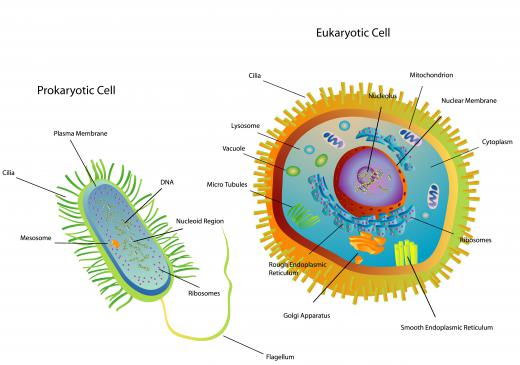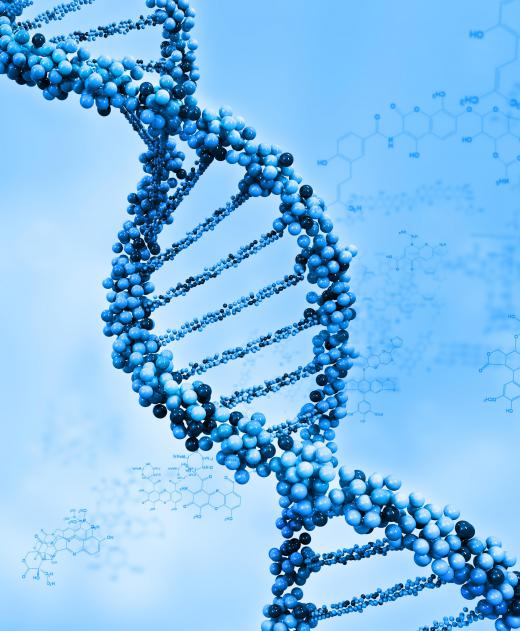What Is Eukaryotic Transcription?
Within all living cells, transcription is the process that produces strands of RNA, which are coded based on the DNA found within the cells. The RNA is then used to create proteins within the cytoplasm of a cell. Within different organisms, the process of transcription can differ slightly. This is particularly true when looking at eukaryotes and prokaryotes; the term eukaryotic transcription describes the process within eukaryotes.
The main difference between eukaryotic organisms and prokaryotic organisms is the presence of membrane bound organelles within the cells. Eukaryotes have membrane bound organelles, like the nucleus and mitochondria, while prokaryotes do not. This is one of the first and most obvious distinctions between prokaryotic and eukaryotic transcription, as it determines where the process occurs. Eukaryotic transcription occurs within the nucleus and mitochondria, as that is where the DNA is found within these types of cells. As a result, translation has to occur after transcription within eukaryotes as the RNA must be transported to the cytoplasm from within the nucleus.

Almost all eukaryotic DNA is found within the nucleus, so this is the primary location for most transcription. When the DNA is being transcribed, a particular region of the DNA is unwound so that it is single stranded. This region is called a cistron, and it eventually codes for a protein after transcription and translation. In most cases, there are three enzymes that are involved in eukaryotic transcription versus just one for prokaryotic transcription.

The enzymes that are involved in transcription are called RNA polymerases, and the three different ones are RNA Polymerase I (RNA Pol I), RNA Polymerase II (RNA Pol II) and RNA Polymerase III (RNA Pol III). The type of RNA determines which of the three polymerases are used during transcription. RNA Pol I transcribes ribosomal RNA (rRNA), which is used to create the ribosomes within the cytoplasm and is where translation occurs. Messenger RNA, the strands that provide the code for the proteins, is transcribed by RNA Pol II. The third enzyme, RNA Pol III, transcribes DNA into transfer RNA (tRNA), which is used to carry the appropriate amino acids to the ribosomes for creating the protein strands.
During eukaryotic transcription, one of the RNA polymerases moves along the single strand of DNA. As it does so, it creates a strand of RNA by adding an RNA nucleotide that is complementary to the one found within the strand of DNA. The RNA nucleotides are free floating within the nucleus and they are attracted to the single unbound strand of DNA. Once the cistron has been transcribed, the new strand of RNA must travel through pores in the nuclear membrane so that translation can occur in the cytoplasm.
AS FEATURED ON:
AS FEATURED ON:












Discuss this Article
Post your comments